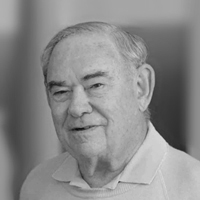Leonard Hayflick

Professor of Anatomy, UCSF
Leonard Hayflick, Ph.D., is Professor of Anatomy at the University of California, San Francisco.
He is a past President of the Gerontological Society of America, a founding member of the Council of the National Institute on Aging, NIH, and a former consultant to the National Cancer Institute and the World Health Organization.
Hayflick is best known for his research in cell biology, virus vaccine development, and mycoplasmology. In 1962 he discovered that, contrary to what was believed since the turn of the century, cultured normal human and animal cells have a limited capacity for replication. This phenomenon is known as "The Hayflick Limit". The discovery overturned a dogma that existed since early in the 20th century and focused attention on the cell as the fundamental location of age changes. Its molecular mechanism is telomere attrition for which the 2009 Nobel Prize in Medicine or Physiology was won by three of Hayflick's colleagues. Dr. Hayflick demonstrated for the first time that mortal and immortal mammalian cells existed. This distinction is the basis for much of modern cancer research.
Hayflick developed the first normal human diploid cell strain for studies on human aging and for research when a normal human cell is required. Hayflick's WI-38 cell strain was used by him to produce the first oral polio vaccine made on a continuously propagated cell strain. WI-38, or its imitators, is used today for the manufacture of most of the worlds' human virus vaccines including those for poliomyelitis, rubella, rubeola, varicella, mumps, rabies, adenoviruses and hepatitis A. Over one billion people have benefitted from vaccines produced on these cells. Hayflick is also recognized for his discovery of the etiological agent of Primary Atypical Pneumonia in humans ("Walking Pneumonia"). He showed that its' cause was not a virus as had been proposed but a mycoplasma, a member of the smallest free-living class of microorganisms. The etiological agent, Mycoplasma pneumoniae, was first grown by Hayflick on a medium he developed and that is now used world-wide for mycoplasma isolation and research.
Hayflick is the recipient of more than twenty-five major awards. He is an Academician and Foreign Member of the Ukrainian Academy of Medical Sciences, a corresponding member of the Société de Biologie of France, a Fellow of the American Association for the Advancement of Science and an Honorary Member of the Society for In Vitro Biology. The Institute of Scientific Information, notes that Hayflick is one of the most cited contemporary scientists in the world in the fields of biochemistry, biophysics, cell biology, genetics and molecular biology. He has authored over 275 scientific papers, book chapters and edited books of which four papers are among the 100 most cited scientific papers of the two million papers published in the basic biomedical sciences from 1961 to 1978.
The 1958 inverted microscope that Hayflick adapted from crystallography for use in cell culture is the prototype for all subsequent inverted microscopes used in the field. It has been accessioned by the Smithsonian Institution along with original ampoules of WI-38 and the labeled containers of poliomyelitis and rabies vaccines produced in these cells.
Dr. Hayflick is the author of the popular book, "How and Why We Age" published in August 1994 by Ballantine Books, NYC and in 1996 as a paperback. This book has been translated into nine languages and published in Japan, Brazil, Russia, Spain, Germany, the Czech Republic, Poland, Israel and Hungary. It was a selection of The Book-of-the-Month Club and has sold over 50,000 copies world-wide.
Hayflick's article
June 2013
